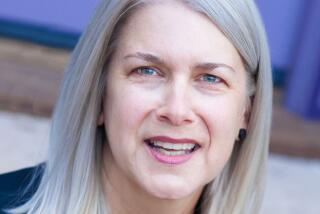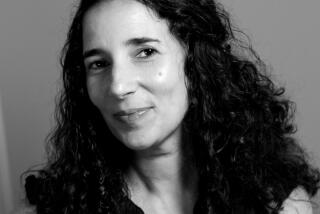Book reviews: Going ‘off the grid’ — what it means and what it takes and why
It’s all Thoreau’s fault. In the whirring, churning American imagination, that vast and lovely virtual world — fed by books and stories — with territory one can still “light out” for, Thoreau is the guy who showed it was possible to get off the merry-go-round, the constant forward movement, and still walk into town from time to time. Plant yourself within spitting distance of civilization, refuse to participate in the orgy of commercialism, refuse to pay taxes if you don’t agree with how they’re spent. You don’t need everything they tell you that you need. You can do more for yourself than they tell you that you can. The message was political, spiritual, practical and environmental. It contained a fine amount of humor, a pinch of self-doubt and a smidgeon of hypocrisy. Today we would call Thoreau’s move to the banks of Walden Pond going off the grid.
Although books about carving out your own piece of the pie have been written ever since the Transcendentalists took issue with the direction that American democracy was taking, never before have I seen the current deluge of books on how to escape the American Dream. I grew up in New York City in an apartment full of them — my mother spent her short life trying to get out of Dodge and into the hills, though the schools she attended surely did not teach survival skills. I’ve chosen seven new tomes that represent various approaches, or should I say escape routes, but there are at least a dozen more. Why? Why now?
Nick Rosen sees going off the grid as a political choice. In “Off the Grid: Inside the Movement for More Space, Less Government, and True Independence in Modern America,” he writes that corporate greed, massive layoffs, healthcare wars, ecological disasters have caused many true believers to question the American Dream. “Most of the people I met on my tour of America,” writes the British Rosen, “are losing faith in the grid, both in its literal and metaphorical sense. They don’t feel a sufficient advantage to being inside the fabric of society.” The grid was created, he writes, relying on David Nye’s 1990 book, “Electrifying America,” to “optimize efficiency (and hence, profitability) for the producer. Society has organized around this approach to business, and in doing so, I believe, has tied itself in knots.” And Rosen adds: “The growth of the grid and the growth of the amoral corporation went hand in hand.” He travels across the U.S. visiting individuals, families and communities that have chosen to live free of the “Meter Man.” He distinguishes between the back-to-the-landers, the hippies, the anarchists and the survivalists and writes about the issues they face as they go off-grid — zoning problems, permits and social ostracism.
In “On the Grid: A Plot of Land, an Average Neighborhood, and the Systems That Make Our World Work,” Scott Huler sets out to better understand the infrastructures that bring power, water, telecommunications, transportation, sewage treatment and other amenities to his corner of North Carolina. He’s “more interested in minutiae,” he writes, than in the big political questions, though he does report that the U.S. infrastructure is on shaky ground. “27 percent of the country’s bridges are obsolete or deficient,” he quotes a recent study from the American Society of Civil Engineers, “the federal government funds less than 10 percent of our clean water needs; you can plan to spend 46 hours a year stuck in traffic — meaning actually motionless — helping waste 5.7 billion gallons of gas. And that’s just the public works portion of our infrastructure.” Huler explains the genesis and evolution of the electrical grid and writes a bit on hopes for the new Smart Grid, “a virtual power plant” that will improve “use patterns instead of building capacity,” and will “respond much more effectively in real time to changing demand loads.” It will also allow people who create their own energy (wind, solar, etc.) to sell excess energy back to the grid. Huler reminds his readers that the grid is nothing more than an extension of our own greed (“our infrastructure, ourselves.”) “I feel like a late-empire Roman,” he writes, just hoping things hold out long enough for my kids to stay relatively safe.”
Perhaps my favorite book in this crop is “Up Tunket Road: The Education of a Modern Homesteader,” in which Philip Ackerman-Leist writes about homesteading, using his experience in Vermont as an example. Ackerman-Leist challenges conventional notions of homesteading (owning one’s own land, self-reliance, independence). Those days are gone, he writes. Today, you can homestead anywhere (a student of his has founded the “back to the yard” movement), not only in rural settings, and the key to successful homesteading is interdependence, not independence. It is no longer possible to fully retreat from society. “Homesteading is an act of defiance and of reliance: defiance of cultural norms and habits and reliance on self and local community.” It is, he writes, “much less about location than it is about intent.” “Up Tunket Road” raises the issue of mentors, literary and practical. Ackerman-Leist cites Thoreau, Helen and Scott Nearing and others who have written about the experience. (Thoreauvians try not to disturb the land; followers of the Nearings bring “shelter, order, and a whir of activity to a place.”) He writes with great reverence about a local farmer-gardener who gave Ackerman-Leist time, tips and help. “Up Tunket Road” takes us through the choices the author and his wife made about their lifestyle: how to create light, how to bathe, how to eat. Homesteading brings you “face to face with ecological choices,” forcing the homesteader to confront, to realize the effect we have on our environment. The book also contains an excellent reading list for people dreaming of a different American Dream.
“Twelve by Twelve: A One-Room Cabin Off the Grid & Beyond the American Dream” is the story of how author William Powers built himself a new framework, a new way to think about his life and how he wanted to live it. The beauty of the book lies in Powers’ generous intimacy — we watch him rethink his entire approach; we watch him relax into himself, become himself, carve himself out of a dream that was not his own. Like the other books, “Twelve by Twelve” makes a huge bow to Thoreau, but it is a far more spiritual, even naïve book (in the most gentle meaning of the word) than the others.
Powers’ living mentor is 60-year-old Jackie Benton, a doctor who chose to earn only $11,000 a year so that she would not have to pay taxes. Benton lent Powers, a 36-year-old international aid worker on leave at home in the U.S., her 12-foot-by-12-foot cabin in North Carolina. “My time in the 12 x 12 was like an internship with Thoreau,” he writes. Powers reconnects with the earth. His literary mentors also include Aldo Leopold, John James Audubon, Loren Eiseley, John Muir and Edward Abbey. During his months in the cabin, Powers learns how to live without things he thought he needed — electricity, a car, companionship, running water. Here are the things he finds one does need to be happy: positive emotion, engagement in the moment, and a sense of meaning and purpose.
In case you might be planning to go off grid in a rural setting, in “The Last Empty Places: A Past and Present Journey Through the Blank Spots on the American Map,” author Peter Stark chooses four parts of the country: Northern Maine, Pennsylvania, Oregon and New Mexico, that still contain vast stretches of uninhabited wilderness — those blank spots on the map. It’s true that just knowing these places exist is uplifting. “Creation is enormous and infinitely complex,” he writes. “Man is only the tiniest, tiniest, tiniest part of all Creation. And you — yes, you — are even tinier than that. That’s what blank spots tell us.”
“Welcome to Utopia: Notes From a Small Town” is an intimate look at a town, really called Utopia, (population: 1,000) in Texas that has survived quite nicely, until recently, off the cultural grid. Karen Valby’s editor at Entertainment Weekly asked her, in 2006, to find a town untouched by pop culture. What began as an assignment ended as a life-changing, mind-opening event for the New York writer, who lived on and off for two years in the town. She learned about roots; about what it means to live with generations tied to a piece of land, about what it means to live apart from commercial culture, to feel suffocated at times by your community.
“The Bucolic Plague: How Two Manhattanites Became Gentlemen Farmers: An Unconventional Memoir” is an entirely different book, but I include it here because it is an antidote to the heaviness that sometimes attends decisions about lifestyle. Josh Kilmer-Purcell (who works in advertising in New York) and Brent Ridge, his partner (who works for the Martha Stewart empire), fell in love with a 200-year-old upstate New York mansion-farmhouse on a trip to pick apples. “This farm had style,” Kilmer-Purcell writes in a stylish drawl, “loads of it. It was, if there was such a thing, a New York City farm.” The pair are not interested in living off any grid, but they do appreciate and move toward a lifestyle that includes local, homegrown organic food and artisanal products. Moving to the country, taking up farming and husbandry was a leap — maybe not off the grid but off a different precipice, out of a comfort zone and into a world where skills that neither of them had were required. “This book is not about living your dream,” Kilmer-Purcell writes up front. “It will not inspire you. You will not be emboldened to attempt anything more than making a fresh pot of coffee.” “The Bucolic Plague” has something different to offer — if we can do it anyone can, it tells us, provided we can laugh at ourselves.
Salter Reynolds is a writer in Los Angeles.
More to Read
The biggest entertainment stories
Get our big stories about Hollywood, film, television, music, arts, culture and more right in your inbox as soon as they publish.
You may occasionally receive promotional content from the Los Angeles Times.






